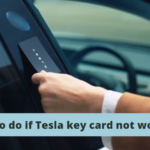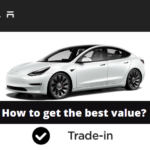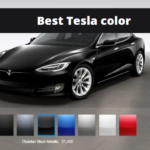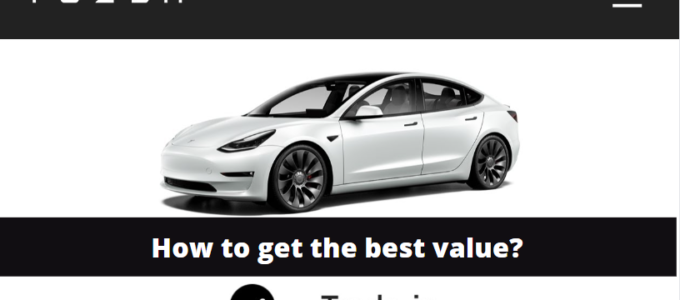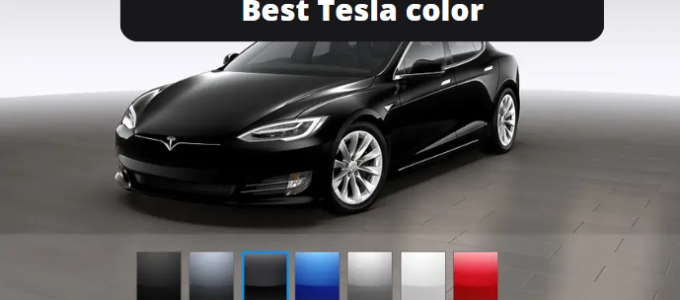What is a Tesla Trade in? Surely you have heard a lot about the programs of other car brands, in which you can leave your previous car for the price of a new one. Tesla also practices such a program. But many drivers are asking questions: Is there any special specificity in such an exchange with Tesla? Let’s take a closer look at this issue.
How does Tesla trade-in work?
Tesla’s trade-in process allows customers to trade in their existing vehicles when purchasing a new Tesla. Here’s a general overview of how Tesla’s trade-in program works:
1. Online Valuation
To begin the trade-in process, customers can visit Tesla’s website and access the trade-in section. They will be prompted to input information about their current vehicle, including make, model, year, mileage, condition, and any additional features or upgrades. Based on this information, Tesla provides an initial valuation range for the trade-in vehicle.
2. Appraisal and Final Valuation
After receiving the initial valuation range online, customers can schedule an appointment with a Tesla representative at a Tesla Service Center for a thorough appraisal. During this process, the Tesla representative evaluates the vehicle’s condition, verifies the information provided, and examines its market value. Following the appraisal, a final trade-in value is determined.
3. Tesla trade in Credit
Once the appraisal and valuation process is complete, Tesla will provide the customer with a trade-in credit offer. This amount represents the final trade-in value that will be deducted from the purchase price of the new Tesla vehicle.
4. Applying the Trade-in Credit
When purchasing a new Tesla, customers can choose to apply the trade-in credit directly to the purchase price. This reduces the amount the customer needs to pay out of pocket or finance. The trade-in credit is typically applied as part of the transaction during the purchase process.
Tesla may also offer alternative options for selling or trading in your vehicle, such as facilitating the sale of your current vehicle through Tesla’s network or recommending third-party services. Exploring all available options can help customers make an informed decision about the best way to proceed with their trade-in.
Many people wonder which cars are suitable for the Trade-in program. Indeed, there are some requirements from Tesla. Let’s take a look at them:
Tesla Requirement for Trade-Ins?
When trading in a vehicle to Tesla, there are some general requirements and considerations to keep in mind. While specific requirements may vary by location and time, here are some common factors to consider:
1. Vehicle Eligibility
Tesla typically accepts trade-ins for a wide range of vehicles, including gas-powered cars, electric vehicles, and even certain commercial vehicles. However, the availability may vary based on the market and specific Tesla trade-in policies in your region.
2. Vehicle Condition
Tesla evaluates the condition of the trade-in vehicle during the appraisal process. While minor wear and tear are generally accepted, a well-maintained vehicle with no significant damage or mechanical issues would likely fetch a higher trade-in value. Any major accidents or damage history may affect the trade-in offer.
3. Vehicle Documentation
You will need to provide all necessary documentation related to the trade-in vehicle, such as the vehicle title, registration, and any relevant service records. These documents help establish ownership and assist with the appraisal process.
4. Vehicle Payoff
If there is an outstanding loan or lease on the trade-in vehicle, Tesla can work with you to determine the appropriate course of action. They may offer assistance in settling the current loan or lease balance as part of the trade-in process.
5. Trade-In Value
Tesla provides a trade-in valuation for your vehicle based on various factors, including its make, model, year, mileage, condition, and market demand. The final trade-in value is determined through an appraisal process conducted by Tesla representatives at a Tesla Service Center.

Which Vehicles are Eligible for Trade-In?
Tesla typically accepts a wide range of vehicles for trade-in, including gas-powered cars, electric vehicles, and certain commercial vehicles. However, the availability and eligibility of trade-in vehicles may vary based on regional policies and market conditions.
While Tesla’s trade-in program covers various vehicle types, it’s important to note that eligibility can depend on factors such as the condition of the vehicle, its make, model, year, mileage, and market demand. Specific trade-in requirements and eligibility criteria may also be influenced by local regulations and policies in different regions.
To determine the eligibility of your specific vehicle for trade-in, it’s advisable to visit Tesla’s official website and access the trade-in section. From there, you can input details about your vehicle, such as make, model, year, and mileage, and receive an initial valuation range. This initial valuation range will provide an indication of the trade-in eligibility for your vehicle.
READ ALSO: Best Tesla color. Full guide 2023
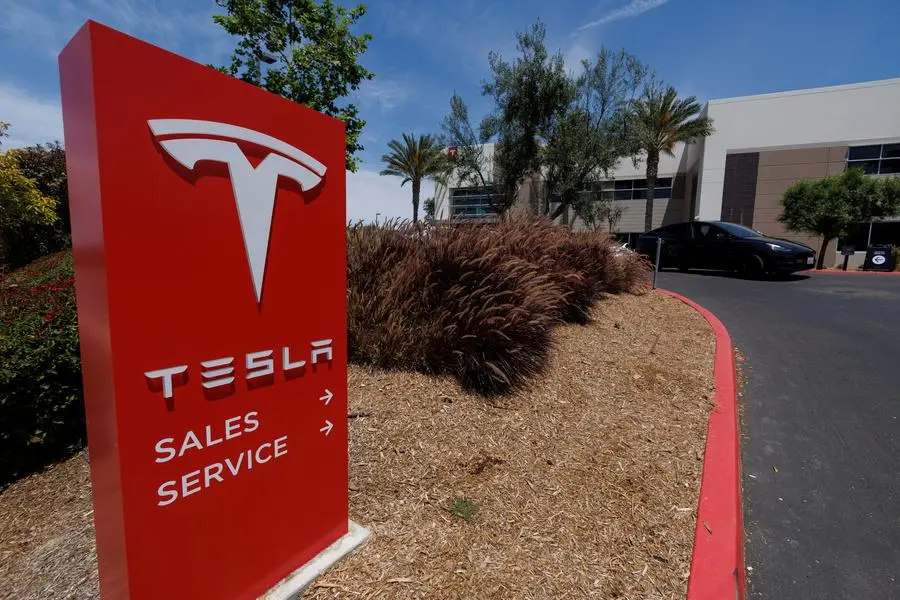
How Long Does Tesla’s Trade-In Offer Last?
The duration of Tesla’s trade-in offer can vary and is subject to various factors, including market conditions and the specific policies in place at the time of the trade-in. However, it’s important to note that trade-in offers typically have a limited validity period. The exact timeframe for the validity of a trade-in offer can vary, and it’s advisable to check with Tesla or refer to the terms and conditions provided during the trade-in process to determine the specific duration.
Generally, trade-in offers are valid for a certain period of time (often several days to a few weeks) from the date the offer is initially presented. During this validity period, customers can consider and proceed with the trade-in option provided by Tesla. If the trade-in offer remains unused beyond the designated validity period, it may need to be re-evaluated or updated based on the prevailing market conditions and factors affecting vehicle valuation.
And, perhaps, the most frequently asked question: How profitable is it to use the Trade-in program? What benefits does this program offer? We decided to make a detailed comparison for you. Let’s take a look at the pros and cons of buying directly and using Trade-in.
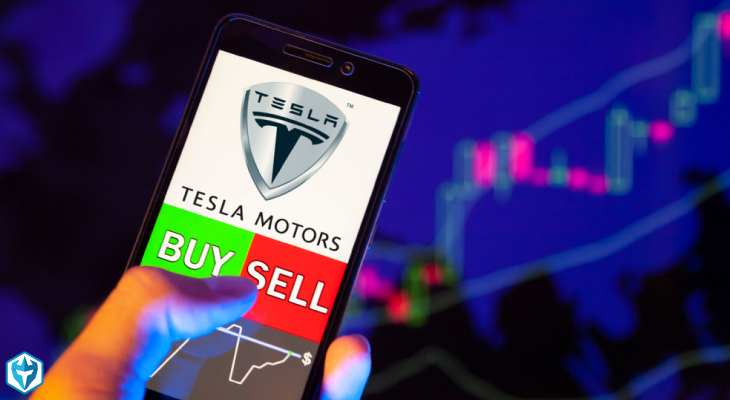
Tesla trade-in program vs. selling directly
And, Finally…
We have gone all the way and are ready to provide you with a detailed plan on how to get the most benefit if you choose to use the Trade-in program.
How to get the best trade-in value?
If you’re looking to get the best trade-in value for your vehicle, here are some tips to consider:
1. Research the Market: Before trading in your vehicle, research the current market value for your make, model, year, and mileage. Online tools and resources like Kelley Blue Book, Edmunds, or AutoTrader can help you estimate the approximate value of your vehicle. Having this knowledge will give you a good starting point for negotiations.
2. Clean and Maintain Your Vehicle: Ensure your vehicle is in the best possible condition before the trade-in appraisal. Clean the interior and exterior thoroughly, remove any personal belongings, and address any minor cosmetic issues such as scratches or dents. Regular maintenance and servicing can also demonstrate that the vehicle has been well cared for.
3. Gather Documentation: Collect all relevant documentation related to your vehicle, including the title, registration, service records, and any additional accessories or upgrades you may have added. Having a complete history of the vehicle and its maintenance can help support its value during the appraisal process.
4. Be Transparent and Provide Accurate Information: Be upfront and transparent about the vehicle’s condition, including any known issues or accidents. Providing accurate information will build trust and ensure an accurate assessment of your vehicle’s value.
5. Consider Timing: Timing can affect trade-in values. Generally, certain factors like the popularity of the model, demand in the market, and promotions or incentives from manufacturers can impact trade-in values. Research and consider the best time to trade in your vehicle to maximize its value.
6. Get Multiple Appraisals: It’s always a good idea to receive multiple trade-in appraisals to compare offers. Consider visiting different dealerships or exploring online trade-in evaluation platforms to gather multiple quotes. This will help you assess the range of values offered and negotiate the best deal.
7. Negotiate Separately: When negotiating a trade-in value, it’s often best to keep it separate from the negotiation of the new vehicle’s price. Separating the two, allows you to focus on getting the best trade-in value possible without the potential complications of the new vehicle negotiation.
https://youtu.be/yzfUdX4T5kw?si=i76_vhhAAiMtVzcu
Conclusion
It’s essential to assess your individual circumstances, priorities, and comfort level when deciding between trading in your vehicle to Tesla or selling it privately. Consider the convenience, time commitment, potential financial gain, and any associated responsibilities and risks. Evaluating these factors will help you make an informed decision that aligns with your needs and preferences.
FAQs
What does Tesla do with trades?
When Tesla accepts a trade-in vehicle, the company typically takes several steps to handle and manage those trades:
1. Vehicle Inspection and Appraisal
2. Trade-In Valuation
3. Resale or Wholesale Auction
4. Certification and Refurbishment
5. Retail Resale
What is the most traded in for Tesla?
It is not possible to provide an exact answer to which vehicle is the most traded in for Tesla, there are some commonly traded-in vehicles that are often reported in various sources and anecdotes. However, it’s important to note that trade-in patterns can vary by region, market demand, and individual preferences. That being said, here are some models that have been frequently mentioned as popular trade-ins for Tesla:
1. Toyota Prius
2. BMW 3 Series
3. Mercedes-Benz C-Class
4. Audi A4/A5
5. Nissan Leaf
